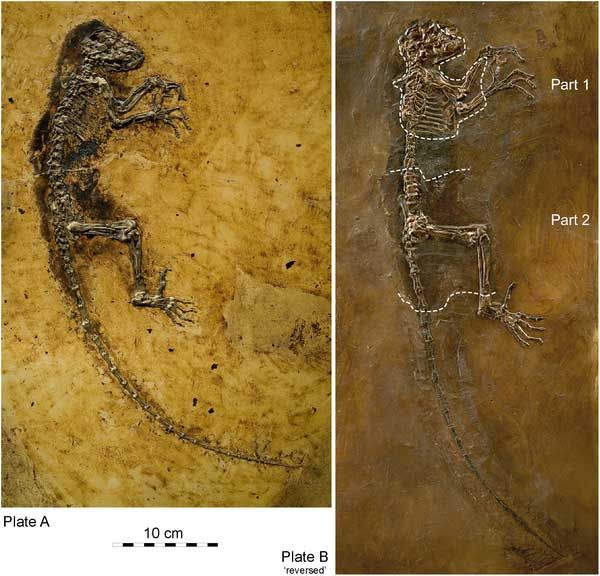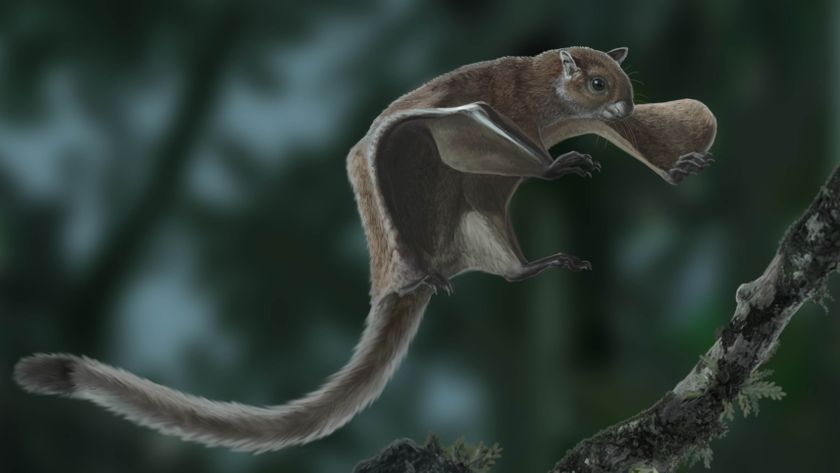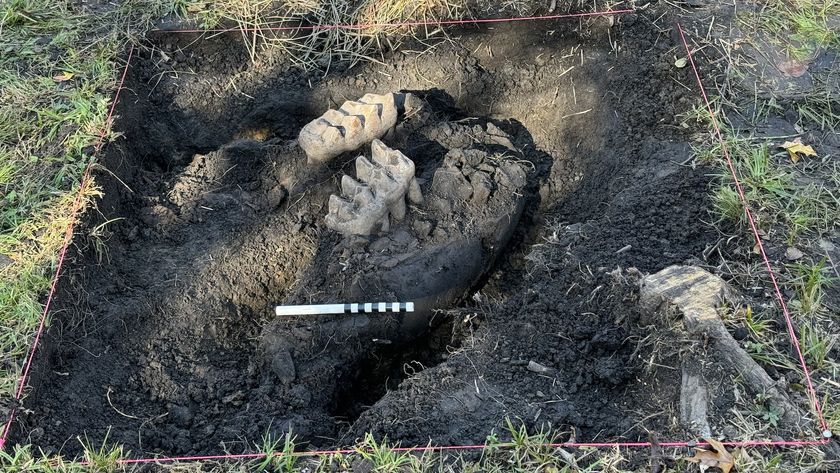'Ida' Fossil Hype Went Too Far

Science is supposed to be methodical, and usually it is, sometimes to the point of being dull. But there are times when a little hoopla is called for. Major discoveries that rewrite the textbooks deserve big headlines and ubiquitous media coverage and lots of scientific slaps on the back and all that.
The discovery of the "Ida" fossil, announced this week as though the 47-million-year-old lemur-like female were a rock star, seemed at first like one to celebrate.
Today we know better. As LiveScience's Clara Moskowitz reports, there are doubts about whether Joan Jett is really descended from Ida. Problem is, most of the coverage is done, and the public could be left with the impression that Ida is a rock-solid missing link in the human evolutionary chain.
Despite press-conference claims, no textbooks will be rewritten any time soon.
"It's not a missing link, it's not even a terribly close relative to monkeys, apes and humans, which is the point they're trying to make," said Chris Beard, a curator of vertebrate paleontology at the Carnegie Museum of Natural History in Pittsburgh.
Here's what went wrong:
Many science journalists around the planet yesterday were doing one of two things, if not both:
Sign up for the Live Science daily newsletter now
Get the world’s most fascinating discoveries delivered straight to your inbox.
a) scrambling to get a handle on the impact of this discovery, which dribbled out like sloppy drool from the jowls of an ancient mammal, and
b) struggling with the knots in their stomachs that suggested something just wasn't quite right.
Maybe it was the appearance of New York Mayor Michael Bloomberg at Ida's unveiling. Maybe it was the TV documentary planned around the finding. Or the book that's been written about it. Or the exclusive deal for yesterday's TV and Web coverage with one network. That much hype, and you wonder what they're hiding.
The debacle started to unfold when the finding, cloaked in secrecy while a media engine was being primed, leaked out in The Wall Street Journal, and then in London's Daily Mail. Then The New York Times wrote about the media circus that was to ensue. All this was published before anyone but the research team (and its tightly controlled media team) knew the details of the finding.
One quote sums up what was going on:
"Any pop band is doing the same thing," Jorn H. Hurum, the lead researcher on the project, said in the Times. "Any athlete is doing the same thing. We have to start thinking the same way in science."
It was at this point that the pits began to grow in some journalists' stomachs.
LiveScience certainly applauds the popularization of science. We participate in it. We love science and we think it's really, really cool. We know you do too, and neither of us needs a media machine (or the mayor of New York) to fabricate a cool-factor and distort the truth.
"The P.R. campaign on this fossil is I think more of a story than the fossil itself," anthropologist Matt Cartmill of Duke University told Moskowitz. "It's a very beautiful fossil, but I didn't see anything in this paper that told me anything decisive that was new."
Regardless of whether Ida is a human ancestor or not, the finding is significant and would have made pretty big headlines anyway. But to apply the PR methods of pop bands and athletes to the announcement of scientific discoveries is a slippery slope that risks demeaning the whole process.
Ida's unveiling was highly scripted (with some "Barnum and Bailey aspects," said paleontologist Richard Kay of Duke University). More important, it can now be said the findings may well have been significantly overstated. We won't know for sure until further research is done. But if this event causes the public to distrust science and media, that distrust is well placed.
Robert Roy Britt is the Editorial Director of Imaginova. In this column, The Water Cooler, he looks at what people are talking about in the world of science and beyond.
Robert is an independent health and science journalist and writer based in Phoenix, Arizona. He is a former editor-in-chief of Live Science with over 20 years of experience as a reporter and editor. He has worked on websites such as Space.com and Tom's Guide, and is a contributor on Medium, covering how we age and how to optimize the mind and body through time. He has a journalism degree from Humboldt State University in California.












